Design and Build
Like all of Godox’s newer products, the build quality of this little flash is quite solid. All of the seams feel well sealed and the overall construction feels like it could take a few knocks.
Perhaps the one exception is the locking wheel for the hotshoe. The plastic thread doesn’t appear to be too sturdy. However, only time will tell with that. It is also difficult to turn with sweaty or cold fingers. A simple locking switch would have been a better option here.
The buttons are well laid out and easy to press. Nothing too revolutionary here, but they offer a quieter click when pushed than some of Godox’s other flashes. Surprisingly, for the cost, even the jog dial is quick and accurate. Overall, only one complaint with the buttons: the power button only requires a quick press to turn the flash on or off. I would much rather have a one second press-and-hold button as I have already knocked it a couple of times while putting it in my bag. Hopefully, this can be fixed with firmware.
The included plastic stand looks more like a shuriken than a stand for your flash, but it does the job. The 1/4-inch thread here appears to be brass and should last a while. So, if you’re mounting this on a lightstand, no need to worry.
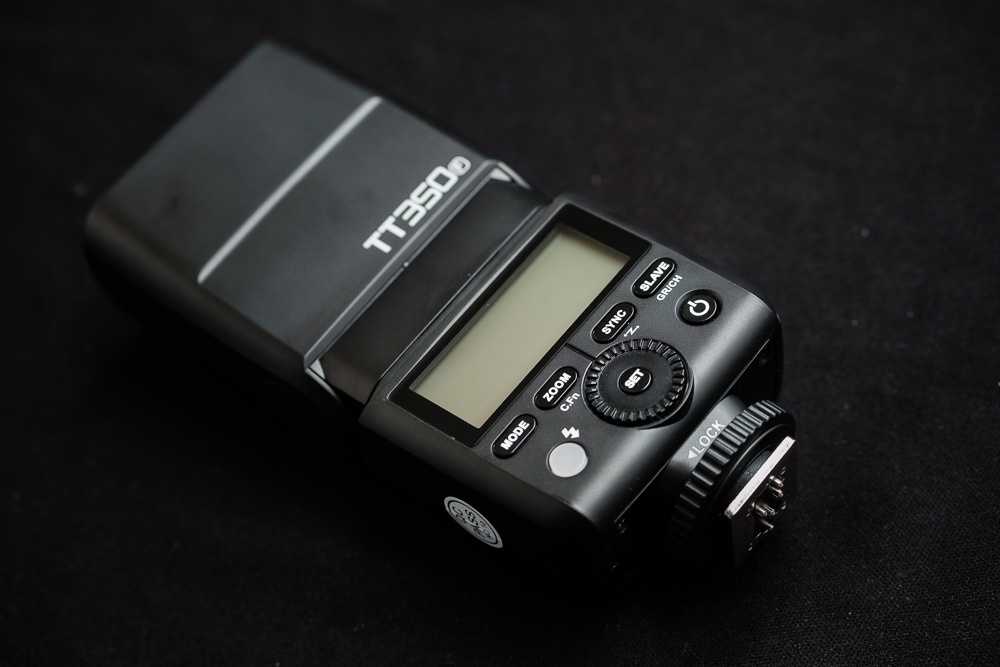
Features
Let’s get to the meat of this unit: its features. In short, it’s special because it gives you access to the Godox ecosystem. The flash itself is much like any other hotshoe offering of its size; It’s slightly less powerful than the flagship offerings from the big manufacturers. However, you get a built-in Godox 2.4 Ghz transceiver. Before we get to that though, let’s take a look at the other features the unit offers.
The Standard Fare
As with almost all modern speedlights, you’ll get TTL, Manual, Slave, and Stroboscopic modes. Manual mode gives you 1/3 power increments from 1/1 all the way down to 1/128, with the flash duration ranging from 1/350 to 1/20,000 of a second. Two slave modes are available: one to fire immediately, and one to fire after pre-flashes. No surprises here. You also have a small bounce card and ultra-wide diffuser that pop up. Finally, recycle times are 0.1-2.2 seconds (more on that later).
Swivel
The head of the unit swivels 90 degrees to the left and 180 degrees to the right. It also tilts from -7 degrees to 90 degrees up and down. Interestingly, the swivel is a dampened, solid-feeling turn, but the tilt has a noisy click that reminds me of the Nikon SB-800. These two feel quite at odds. If the tilt could be made to sound and feel like the swivel, it would give a much more high quality impression.
Fujifilm Control
The flash is controllable from the unit itself, and certain features, like power, are available in the camera menu. Of course, Godox specific functions like groups for the wireless system are only available on the unit itself.
LCD
This is a small thing, but the LCD is orange. Not just any orange, an obnoxious orange. I understand that Godox’s brand color is orange, but that need not extend to the LCD. The sexy blue/black of the AD200 would have been much nicer. Otherwise, it does its job.
Information displayed includes current mode, power, groups, channels, zoom, and under/over exposure when in TTL mode. It is easy to see what your settings are at a glance.
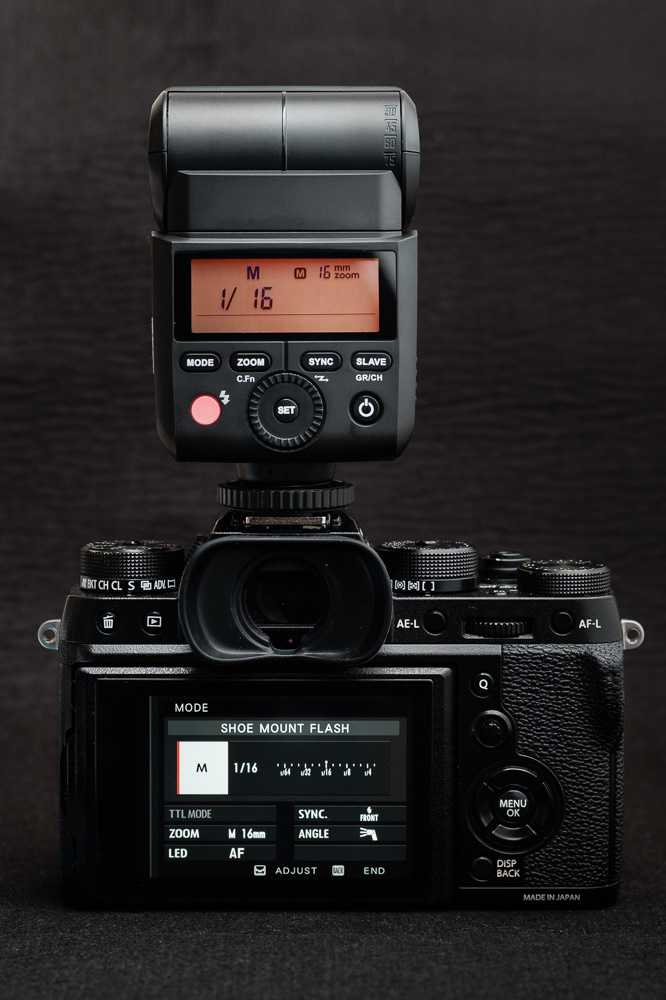
Focus Assist Lamp
This thing is blinding. Unlike the grid that the Nikon flashes project, the Godox floods the scene with red light. This is not a real issue from the photographer’s perspective as it allows them to focus, but the subject gets blinded. I would typically use this feature on my Nikon cameras to help me focus in dark corporate functions. I would simply stop the flash from firing and use only the AF assist beam. However, this won’t be possible with the Godox unit as the light is far too distracting.
The Wireless System
Here’s where the real benefits of getting this unit lie. Not only is it fully controllable from any Godox trigger or master flash, but it can actually act as a trigger and master as well. By using it this way, you gain access to the TTL and HSS functions we’ve all been waiting for. This means that if you have a Godox TTL strobe like the AD200, you’ll want to update the firmware on that so you can utilize the TTL functions with your Fujifilm cameras. At the same time, you get access to 1/8,000 second sync speed. Of course, your Fujifilm body needs to support these.
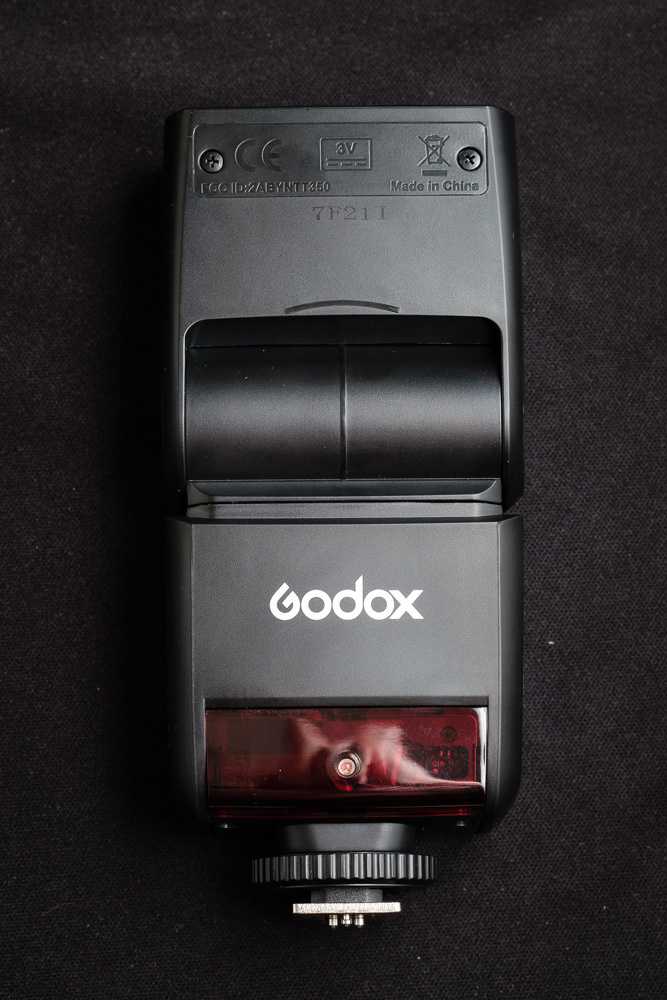
What It Is and What It Isn’t
This isn’t an all-rounder like the flagships from Nikon and Canon. This is a tiny package with a fair punch. It will certainly stand up to simple day to day use like a corporate function or a simple sunset shoot. However, for you wedding photographers looking for something that will just go all night, this still isn’t your option.
For me, I see this as a second light in case I need an extra pop on my environment and a backup trigger in case anything goes wrong with my dedicated trigger. Until the X1T-F arrives, this will be my HSS trigger for the Fujifilm X system.
With its light weight and low price, you could also consider adding a few to your bag and ganging them up when needed.
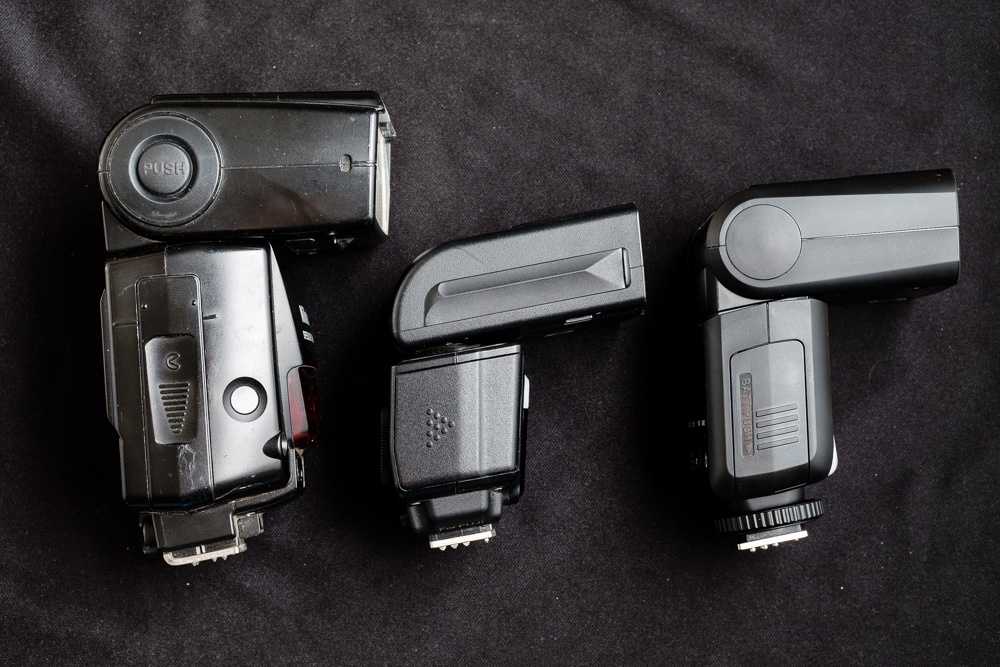
From left to right — Nikon SB800, Nissin i40, Godox TT350F.
In the Real World
So far, I’ve used this flash on a couple of test shoots to see how the output goes, and if the spec sheets give us an accurate idea of what the flash is. As expected, it did quite well. If you consider a flagship Nikon or Canon flash locked at 1/2 power or below, and make the recycle times a little longer, you have this flash. For the most part, everything I said about the Nissin i40 applies here. This is a great little unit and for this price, you might as well try one.
One thing that bugged me quite a bit was the lack of audible response from the flash. When I’m working in an environment where it’s possible, I like to have my flash chirp at me when it’s done recycling so I can continue shooting. With the TT350F, I have to take my eye away from the camera to check if the recycle light is on. One way to know is that it simply will not fire if not full recycled. All other flashes I’ve used will at least dump what’s in the capacitor when you trip them, even if they’re not fully recycled. Not the TT350F though. You either get it’s desired output or you get nothing.
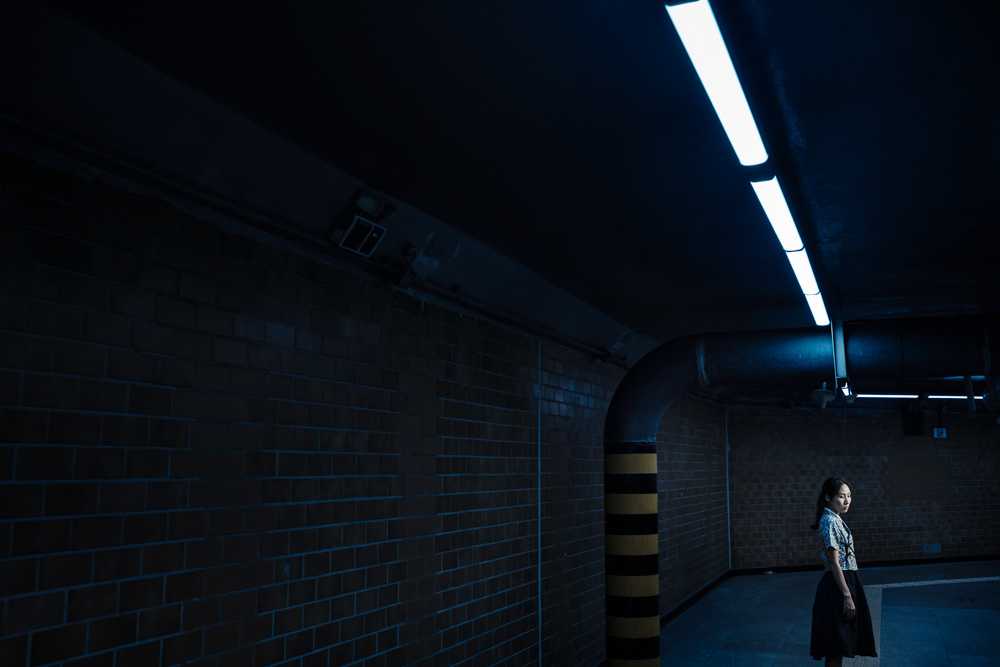
Output
As an on camera flash, it’s not too shabby at all. With a respectable guide number of 36 meters (ISO 100, 105mm), it puts out enough power for light day to day use. As manufacturers use all sorts of different measurements for these guide numbers, let’s pit it against a few other common flashes in a couple of common scenarios. I pulled out my Nissin i40, Nikon SB800, and Godox AD200 for these measurements. For both tests, I metered in a dark room at ISO 100, 1/250 s using a Sekonic light meter. Each flash was set to its widest zoom setting, except the AD200 which has no zoom head.
First up, I tried it on camera pointed into the ceiling which is pretty typical for a quick group shot. Actually, I mounted all the lights on the same light stand and aimed them straight up for a fair test. The TT350F metered at f/2.8, the Nissin i40 at f/2.8 + 0.3, the Nikon SB800 at f/4, and the Godox AD200 f/5.6. As we can see, there is a two stop difference here between the TT350F and the AD200, with the Nikon being right in between.
Next, let’s push it through a Photek Softlighter II 60-inch. Here the TT350F throws back f/4 + 0.3. In comparison, the Nissin i40 metered at f/4 + 0.4, the SB800 at f/4 + 0.9, and the AD200 at f/8 + 0.2. Here we see almost exactly the same results, with the AD200 offering about an extra 1/3 stop over the others in this test.

The Godox TT350F in a shoot-thru umbrella at a distance of approximately 2 metres. Fujifilm X-T2, 1/160, f/2.8, ISO200.
Recycle Times and Overheat Protection
Godox lists 0.1-2.2 seconds recycle for this unit, but in my tests, this isn’t quite accurate. From the moment of pushing the fire button to the moment the ready light came on was somewhere between 3 and 4 seconds for me. I’m using Eneloop Pro NiMH batteries, which have reduced recycle times in every other flash I have used. Using standard alkaline batteries increased the recycle time to nearly 6 seconds. But, considering there are only two AA batteries recycling the flash, this is still respectable. Not great if you’re in a pit of journalists, but quite usable for a portrait session.
One test I did do while recycling the flash was to invoke Godox’s overheat protection. After 30 full power pops, the flash will automatically go into overheat protection mode. However, the technology employed here is crude and not particularly effective. The unit cuts itself off after 30 consecutive shots as listed and doubles the recycle time, presumably to regulate additional heat build up. However, even if you don’t pop the flash again, the overheat symbol remains on permanently. I actually waited 30 minutes to see if it would go away. No such luck. By switching the unit off and back on again, regardless of how long you wait, the overheat protection gets turned off. Thus, presumably all you need to do is switch it off and back on so that you can continue to shoot and fry the flash.






























